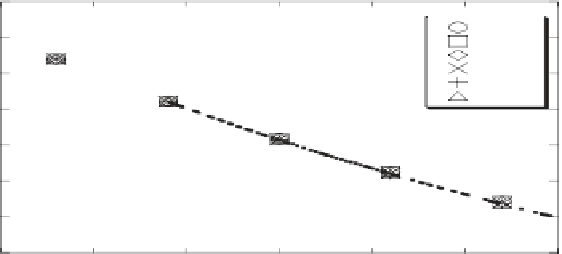Geoscience Reference
In-Depth Information
of the analyzed concentration. This phenomenon can be assumed that the
available organic carbon for bacteria X1 is limited, therefore, bacteria X1
does not grow. In the next place, the calculated concentration of Fe
2+
and
Mn
2+
shows lager than these of the analyzed concentration. It was inferred
that Fe
2+
reacted with sulfide ion as was seen for the precipitation of iron
sulfide in the experimental apparatus. Finally, the calculated concentration
of organic carbon is smaller than that of the analyzed concentration, from
consideration of only dissolution the available organic carbon in numerical
simulation.
5. Calculated Results and Conclusion
Figure2showsthetimeseriesofFe(OH)
3
concentration in matrix phase at
the depth of 5 cm. Figures 3 and 4 show the time series of Fe(OH)
3
concen-
tration or Fe
2+
concentration in biophase, Fig. 5 shows the time series of
Fe
2+
concentration in mobile phase. Figure 6 shows the time series of CH
2
O
and bacteria X3 in biophase. These figures show that the concentration of
iron hydroxide in matrix phase decreases. While, the concentration of iron
hydroxide in biophase increases. Through the bacteria-mediated reduction
divalent iron in mobile phase changes corresponding to the concentration
in biophase. Since bacteria cannot grow without sucient organic carbon,
the concentration of divalent iron does not increase in biophase. Thus, the
concentration of divalent iron in mobile phase is controlled by mass-transfer
reaction.
[meq/l]
1470
5 cm
10 cm
15 cm
20 cm
25 cm
30 cm
1465
1460
1455
1450
1445
1440
1435
0
10
20
30
40
50
60
TIME [day]
Fig. 2.
Time series of iron hydroxide in matrix phase.






































